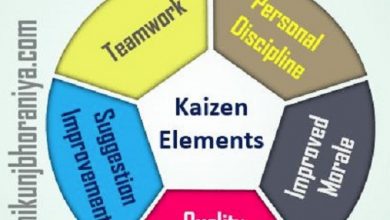What is Cost structure characteristics and example
The cost structure is the distribution of costs that an organization affects in terms of different types and percentages of fixed and variable costs. This definition can be broken down along certain lines, such as by product, geographic region or customer.
Fixed costs are expenses that do not change their value regardless of the amount of production you have, while variable costs will change based on the amount manufactured.
Even within the same organization, the cost structure can change between product lines or business units as a result of the different types of tasks they perform.
It is used as a pricing tool when you have a cost-based pricing strategy, as well as to distinguish areas where costs can be reduced or at least have better control over them.
Therefore, the cost structure concept is a concept that belongs to management accounting. It has no applicability in financial accounting.
Features of cost structure
The cost structure details the main costs incurred when working with your own business model. Costs are incurred when revenue is generated, value is created and added, and customer relationships are maintained.
A company’s level of competitiveness can be reconsidered by transforming the cost structure, not just in total value, but in fixed and variable cost factors.
For example, a department’s functions may be outsourced to third parties who are willing to charge the company based on their level of usage.
By doing this, a fixed cost is being eliminated in favor of a variable cost. Thus, the company will now have a lower break-even point, being able to make profits with even fewer units sold.
cost objects
To establish a cost structure, each of the costs incurred based on a cost object is specified, for example:
Cost structure by product
– Fixed costs: labor, manufacturing overhead.
– Variable costs: raw materials, commissions, production supplies, piece wages.
Service cost structure
– Fixed costs: general administrative expenses.
– Variable costs: salaries, bonuses, payroll taxes, travel and representation.
Cost structure by product line
– Fixed costs: general administrative expenses, manufacturing overhead, labor.
– Variable costs: raw materials, commissions, production supplies.
Cost structure per customer
– Fixed costs: customer service administrative expenses, warranty claims.
– Variable costs: costs of products and services sold to the customer, product returns, credits obtained, discounts for prepayments received.
cost allocation
It is the process of determining costs that have been committed, adding them, and then assigning them to the correct cost objects on a measurable basis.
Cost allocation is useful for apportioning costs among various cost objects for the purpose, for example, of calculating the benefit of different customers.
A company often uses a single cost allocation basis, such as labor hours or machine hours, to allocate groups of costs to corresponding cost objects.
Types of cost structure
Incited by costs
Cost-based business models aim to reduce costs as much as possible.
This viewpoint aims to create and maintain as agile a cost structure as possible, using low-price bids, maximum automation, and extensive outsourcing.
Requested by value
Certain companies care less about the cost involved in designing a specific business model and focus more on value creation.
Value-based business models are generally characterized by a high level of personalized service and a premium value proposition.
Cost structure attributes
Scale economy
These are the cost advantages that a firm enjoys when expanding its production. For example, large companies benefit from lower prices for bulk purchases.
These factors cause the average unit cost to decrease as production increases.
Economies of Scope
These are the cost advantages that a company enjoys due to a larger scope of its operations.
For example, in a large company, the same marketing activities might support multiple products.
Example of cost structure
Companies X and Z
Consider two new companies, companies X and company Z. Company X’s fixed cost structure is high because it plans to start operations by investing large amounts in facilities, production equipment, and machinery to manufacture and distribute its own product.
While this decision leads to a lower variable cost, the downside is a higher monthly fixed cost of $36,210.
On the other hand, company Z proposes another type of startup. The company plans to outsource manufacturing and distribution operations to third parties. So you need a smaller investment in office plant, equipment and machines, which leads to a lower monthly fixed cost of $7,398.
However, their variable costs are higher since payments must be made to the third party responsible for distribution and manufacturing operations.
Assume that each company, depending on its operating structure, sells 6,000 units of its product at the same selling price of $12, with a total cost of $65,000 and earnings of $7,000.
Final result
With this information, you can calculate the break-even point for each company using this formula:
Break-even sales = (fixed costs /% gross margin), where gross margin% is: (selling price – variable cost) / selling price.
Break-even units, on the other hand, can be obtained using this formula: Break-even units = point-of-sale price / sale.
After carrying out the calculations, it is observed that the difference in the cost structure of each company results in different break-even positions.
For Company Z, with a lower fixed cost structure, it only needs to sell 3,083 units at the $12 sales price to break even, while Company X needs to sell 5,028 units to break even.
Company X will need to sell 63% more units than Company Z to break even due to its high fixed cost structure.
This means that when making financial projections for a new business, it’s best to keep fixed costs to a minimum to reach break-even much faster.




